For AP + AR
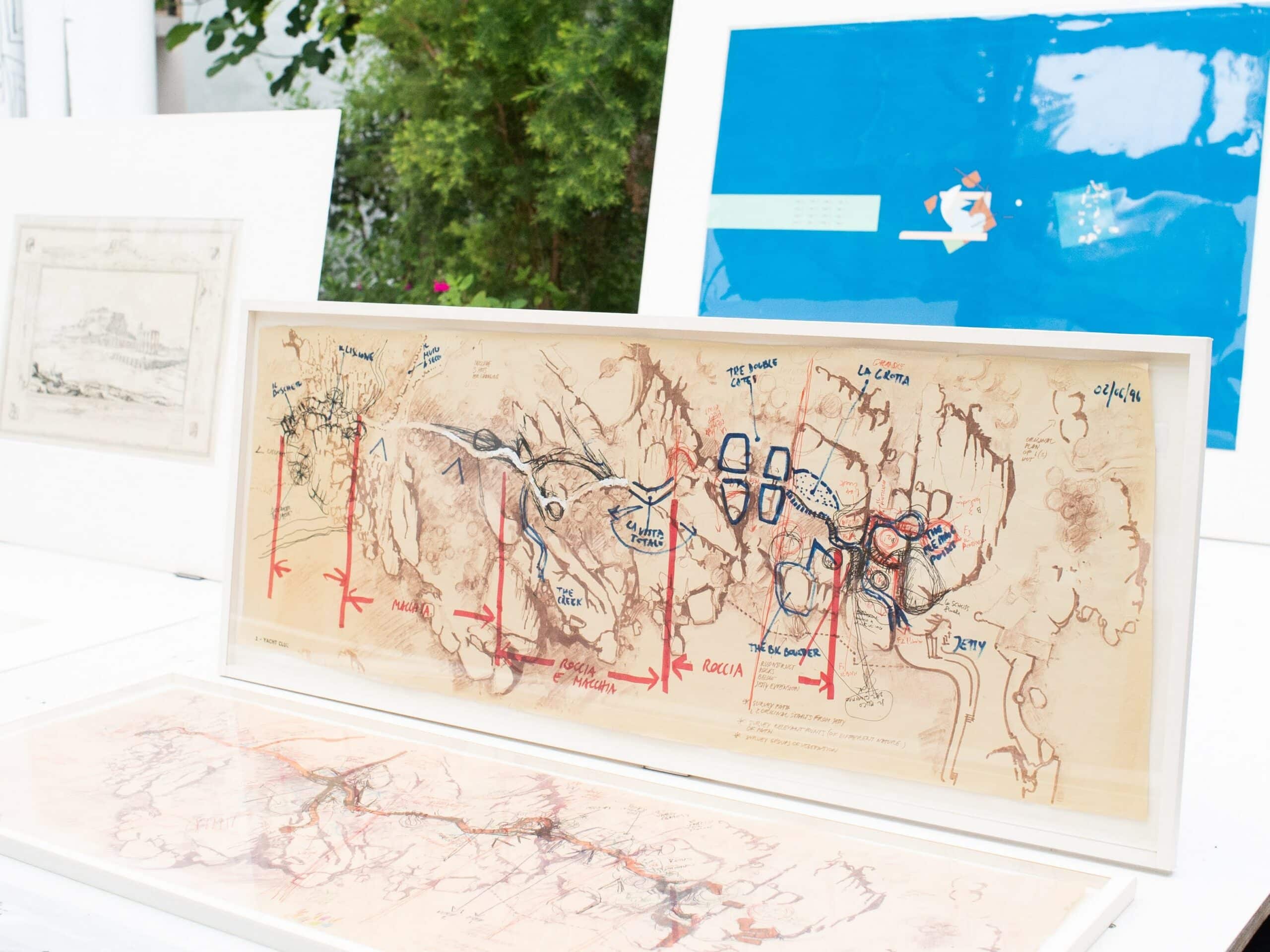
Long, thin and crisp, sun-bleached, rose-blushed. Thousand-time photocopied notations of notations. Struck-through with highlighter, corrected and recorrected re-negotiated, scribbled and walked across. I walk together with AP e AR, our thin nibbed-shoes picking careful tracks between sharpie chasms. We leak behind us inky trails, to be washed away by the evening tide. My hand traces his feet trace the rocks, each led by the last. Lines are walked, re-walked, drawn, and poured again tomorrow.
The first time I met the Yacht Club drawings, I felt an intense familiarity with a place I’d never been, a person I’d never known and a time I’d never lived in. I recognised those lines. Those were lines that sought connection with the land. Lines drawn to get closer, they extended further than their limits, further than the paper on which they fell. Land-lines and life-lines and love-lines stringing searchingly over geologic epochs. Lines that listen, that learn, that trip and tease. That wiggle with the dry sense of humour of a joke told by an ancient granite outcrop. Not everyone can hear those kinds of jokes.
I recognised those lines, for they are somehow the same lines that I seek.
Up again for dawn, meeting their own reflections across the ocean. Charcoal forms emerge from the gloom, stretching, yawning, before settling in a fractionally different position than yesterday. No one else would notice. AR unfolds, makes a note, refolds. Points and gestures as the precariously perched cement mixer swings respectfully around a granite toe, tracing out its intricate edge, knowing very well who was here first. Lines are walked, re-walked, drawn, re- and poured again tomorrow.
My hand traces his feet trace the rocks, each led by the last. Two hours more until it will be too hot to continue, the rest will be picked up tonight. AR beckons me to walk in front, to see what they saw without them in the way: to experience the land, the paper, unfolding. To lead. I am aware of every fingerprint and footstep as we stretch our bodies around the cliff, whitened knuckles grasping to the rocks for support. The rocks shape our dance. AP unfolds, makes another note. I hadn’t noticed until now, my jumper is the same vibrant orange as his highlighter nib, now tracing his way forward before him and her from above.
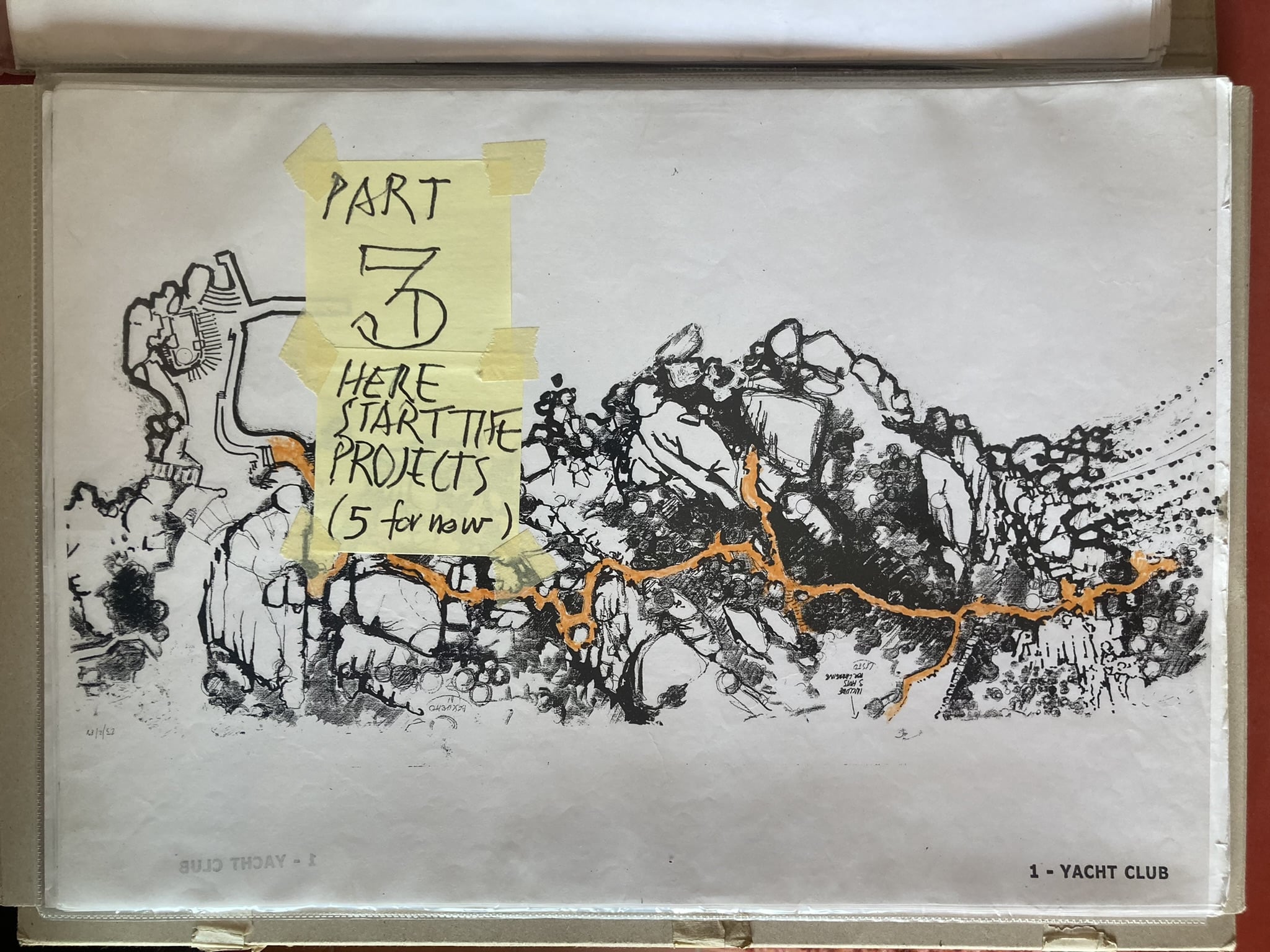
I look up from the drawing at myself in the archive. AP looks down through circular glasses and six months of tracing paper overlays. Their office looks out to their grandson AP looping haphazardly around giant terracotta pots on a tiny tricycle. Strawberries are a springtime fruit here, and they’re almost over. We perch them on the tip of our tongue.
The little blue book with the piece I wrote on the Yacht Club is on the desk. A familiar and unexpected friend. You must sign it. AP has been on about your signature for weeks, please don’t forget. He asked again this morning. Wait. Will you read the piece to us out loud? Let me get him now.
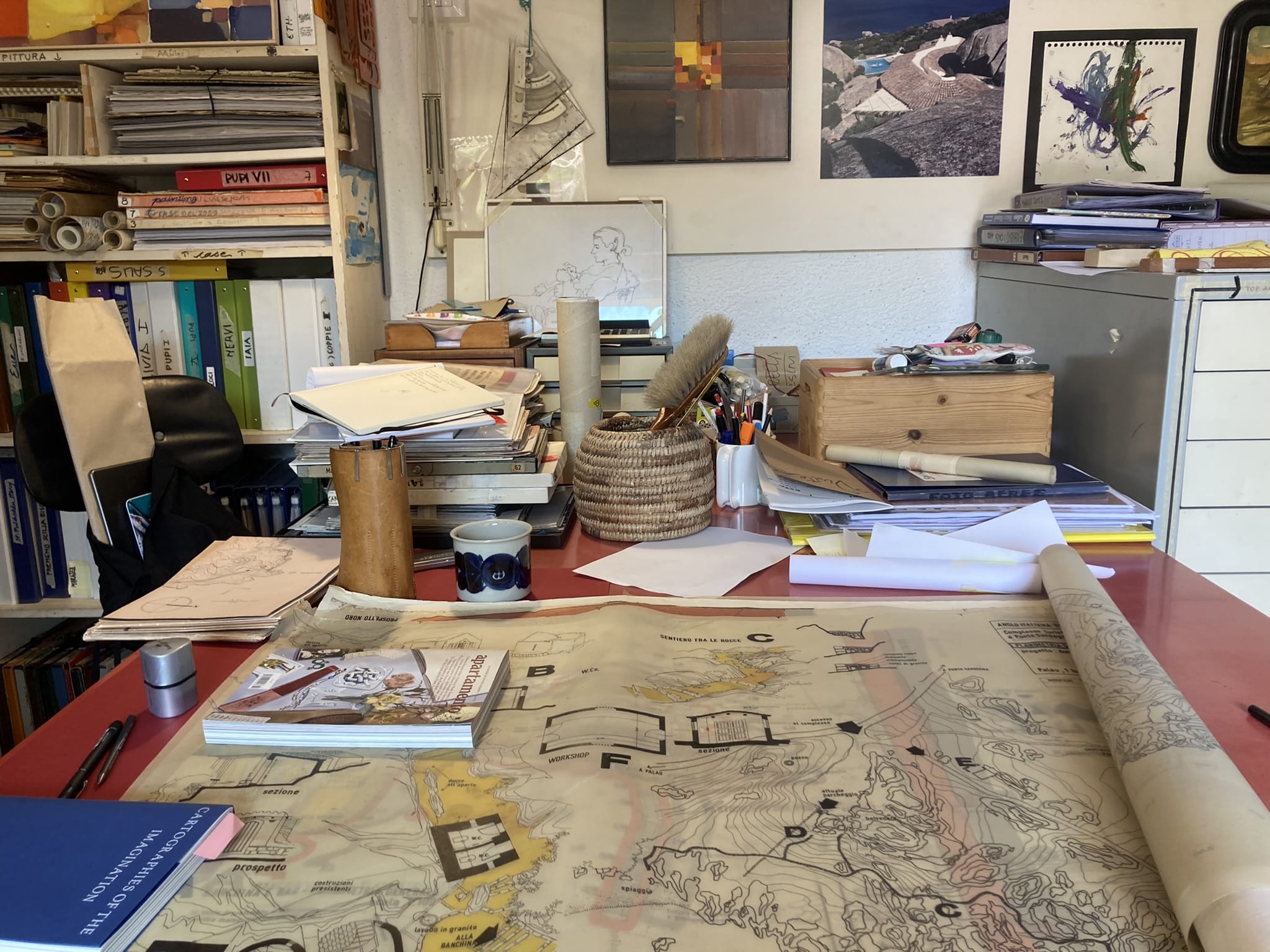
I sit still and wait in his chair and watch the tricycle loop under the mountain’s silhouette and wonder who has come to visit who, who learns and who continues—still, aged four or thirty-three or eighty-nine or 300 million years—to listen? Strewn sketchbooks of the view from his window, looking out and looking back. Windows from past homes remembering past sunrises.
I read to him and her in their studio, the tale I wrote of them without us having met. I am four years old. He leans on his stick, staring out the window, over the rocks, up to the sky and into the paper. She watches.
I sit still and silent with AR e EP and those rocks. Still and silent for millennia, watching and listening as wind-whips transform gods to monsters to heroes to landslides to pathways to pools. We rest our open palms and whitened knuckles on the hands of those gods, the same sun-bleached rose-blushed hue blends our skin into rock into paper into the pigment of their living room walls.
Have you signed it? We take it in turns to hold the pen.
Easter Sunday. I draw, this time my chair to the dining table with AR e AP e MP e AP. Three generations of Ps eager to taste the artichoke AR has directed me to cook with the traditional Sardinian recipe. Even the artichokes draw, leaking black trails over my pink fingers, rock, paper, living room wall. AP’s wit is as dry and sharp and elegant as the granite. AR’s brightness encompasses all.
Go, tomorrow. There is no reason why the door would be locked. Knock, then enter, and if anyone comes and asks then just tell them you’re our friends.
We stop as two police cars spin down the mountainside towards us. Screech to a halt right in the middle, our angle fearless. AR swings the car door open and shouts to them, gesturing. They continue together energetically for ten minutes, twenty. I have no doubt that she’s their chief: the voice of this land. They finish and we continue on, to a rock that is a home that is a drawing that is a dream. Leaving the car, we move in stillness, every shift unveiling an understanding.
AP makes his slow shuffled way to a drawing roll cabinet. Long thin crisp rolls in alphabetical order, tracking their walks, their learnings, their soft suggestions. I follow his footsteps, then AR. We are slow, now, slower. When we arrive, he rests his stick and peers, feeling the textures of each in turn. He stops at one and taps it. Empty, waiting patiently to be drawn. The next day, I take the long, precious roll of sun-bleached rose-hued paper, skin, rock, living room wall to the post office to be shipped.
I look now across my living room at that patient roll of paper, skin, rock, living room wall, sitting silently next to my own rolled drawn drawings, in alphabetical chronological order. I pick up my pen, and walk with them both, over the rocks that shift very slightly. I notice, unroll, make a note, and carry on.
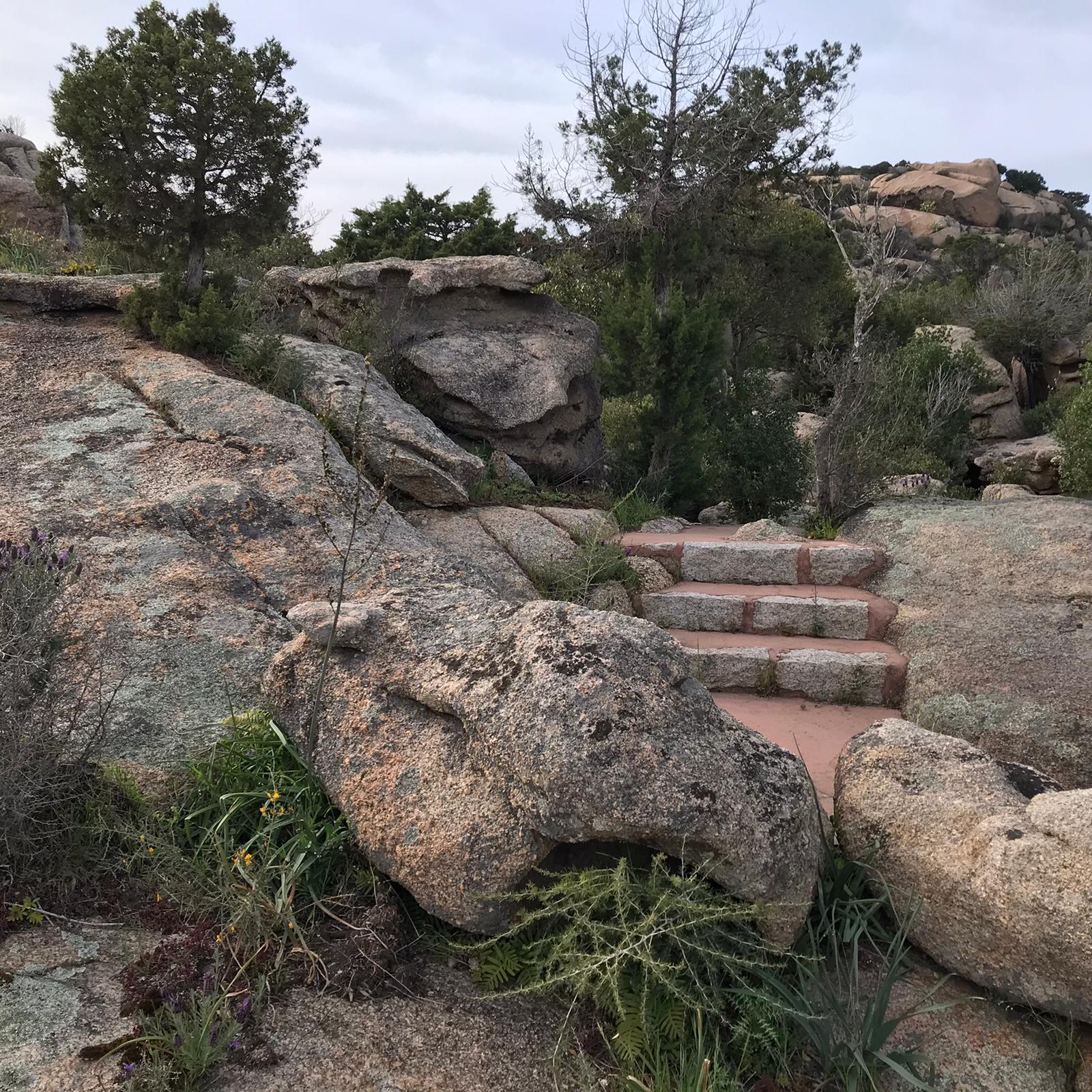
* * *
I first came across the work of Alberto and Annarita Ponis in 2019, on my first visit to the Drawing Matter archives. I was on the hunt for drawings for a project I was curating with Sayan Skandaraajah—Cartographies of the Imagination: Festival of Drawing. With a loose agenda of ‘maps that aren’t maps’, the moment those long, thin papers were laid out on the table, my heart was in my throat. I had no idea what it was those drawings held, but whatever it was, was powerful. I poured over the drawings in the low light of the barn for hours.
We showcased Ponis’ Yacht Club drawings at the festival in 2021 and based a chapter in our book on them, but still they weren’t done with me. In Spring 2022, Alberto and Annarita welcomed my mother and I into their family home, their rocky, inky world. We spent just a week pacing out the lands they had spent their lives drawing, tracing, navigating, knowing, year on year on year. My time there felt much longer. I set up office in their studio, drawing and writing whenever I could. Annarita dug out drawings and projects not seen in decades, piling them high around me, crackling with energy. Alberto shifted sketchbooks in front of me, watercolour upon watercolour, almost imperceptibly different. I leafed and wrote and drew and walked, and joined their family dinners. I began to understand some of what it was that those papers held.
I began to understand how every line, mark and notation they made was already here, millennia before they’d arrived, hidden deep within the land. Their drawings and designs were excavations of what has always been—of what the landscape was whispering of, longing for. They were simply attuned enough to listen.
These are drawings that recognise rocks as ancestors. Clients as students. Goat-herders as guides. Family as studio. Everyday as art. In these drawings, sunsets and self-seeded trees dictate every shift in weight and evening recline, knowing us better than we know ourselves—how we grow like mosses on the sunny side. These drawings are made from- and for- the matter around us. On the soil that we stand, our dinner is grown, eaten and returned for regrowth. Wall render is rock, crockery from local clay shaped by local hands who know. Why would you need a carpark when you can walk there? These drawings contain a simplicity, a clarity, an honesty and a deep love for the land and its wishes. This love continues to live in those lines, and to diffuse to those who spend time with them. I am ever-thankful for the time I spent with AR + AP, and for the drawings Alberto has left us behind him. I continue to draw in their footsteps.
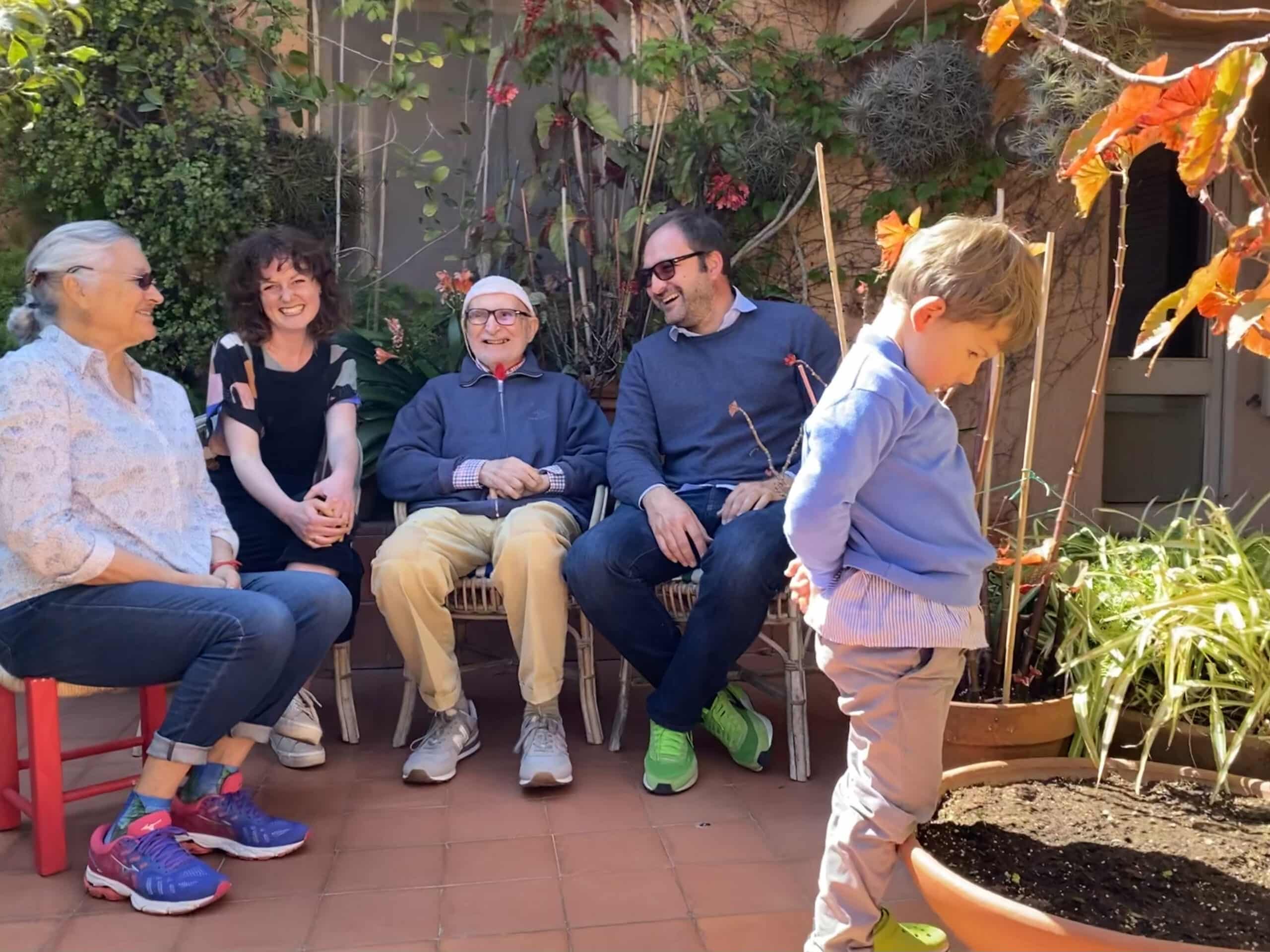
Kirsty Badenoch is an independent artist, researcher and architect. She works with fragile and fractured landscapes, communities and ecologies to develop collaborative place-based projects that forefront more-than-human agency. Kirsty teaches at The Bartlett School of Architecture, UCL.

– Alberto Ponis